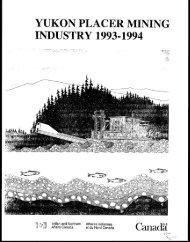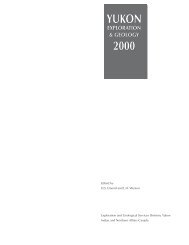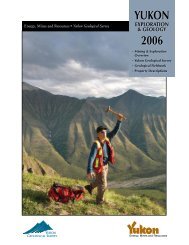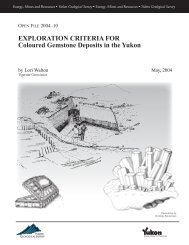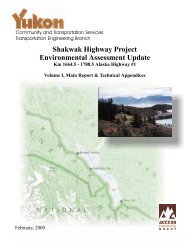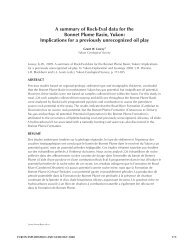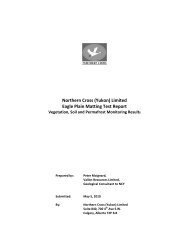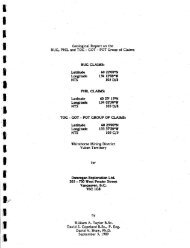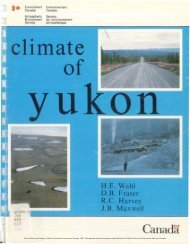WhiteCAP_Plan_01SEPT..
WhiteCAP_Plan_01SEPT..
WhiteCAP_Plan_01SEPT..
You also want an ePaper? Increase the reach of your titles
YUMPU automatically turns print PDFs into web optimized ePapers that Google loves.
NCE <strong>WhiteCAP</strong> Climate Projections<br />
Precipitation<br />
Mean annual precipitation (MAP) was also projected for the Whitehorse area based on<br />
the 1961-1990 baseline (below). Projected annual mean precipitation in the City of<br />
Whitehorse area is anticipated to increase from 585mm to between 638mm to 657mm<br />
by 2050.<br />
Seasonal precipitation was also projected (below). Seasonal precipitation is expected to<br />
increase throughout the year. Projected increases to seasonal precipitation by SRES<br />
scenario are provided in Table 3.<br />
Table 3: Baseline and Projected Precipitation for the Whitehorse Area (mm)<br />
Season<br />
Baseline (1961-<br />
1990) 2030<br />
B1<br />
2050 2030<br />
A1B<br />
2050<br />
Annual 585 620 632 638 657<br />
Spring 89 96 99 100 100<br />
Summer 211 224 224 225 234<br />
Autumn 170 178 183 186 192<br />
Winter 115 121 123 128 131<br />
Seasonal precipitation is anticipated to increase the most in winter and fall. Winter<br />
precipitation is projected to increase between 11.3% and 13.9%, while autumn<br />
precipitation is projected to increase between 9.4% and 12.9%. Increases in MAP and<br />
seasonal precipitation in the Whitehorse area by 2030 and 2050 are provided in Table 4.<br />
Table 4: Projected Changes in Precipitation for the Whitehorse Area<br />
Season B1 (Increase from 1961-1990) A1B (Increase from 1961-1990)<br />
2030 2050 2030 2050<br />
mm % mm % mm % mm %<br />
Annual 35 5.9 47 8.0 53 9.1 72 12.3<br />
Spring 7 7.9 10 11.2 11 12.4 11 12.4<br />
Summer 13 6.2 13 6.2 14 6.6 23 10.9<br />
Autumn 8 4.7 13 7.6 16 9.4 22 12.9<br />
Winter 6 5.2 8 7.0 13 11.3 16 13.9<br />
Note that although precipitation is expected to increase, higher temperatures are likely to<br />
drive higher evapotranspiration, meaning that soil moisture and water availability may<br />
actually decrease.<br />
E.8



